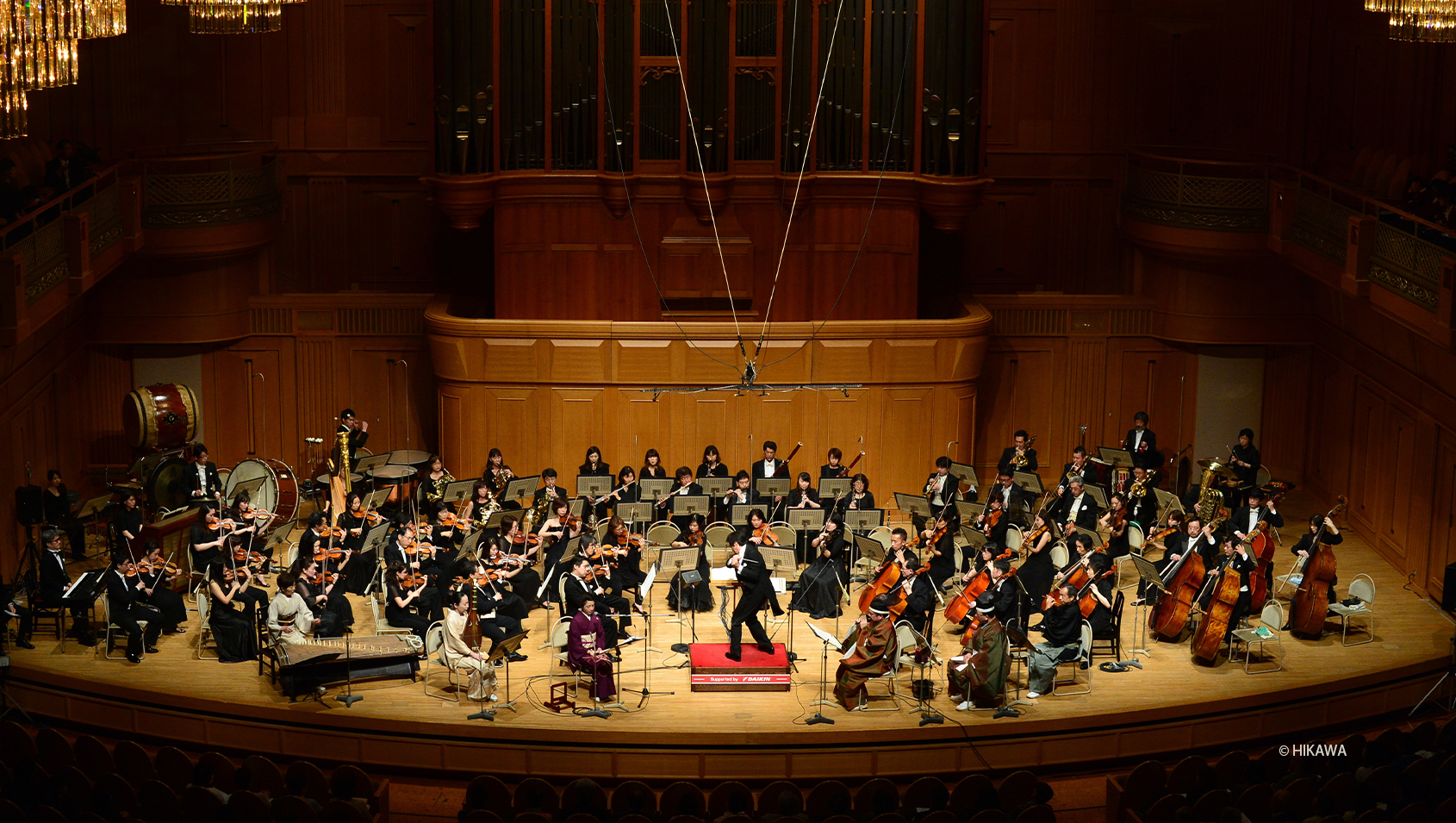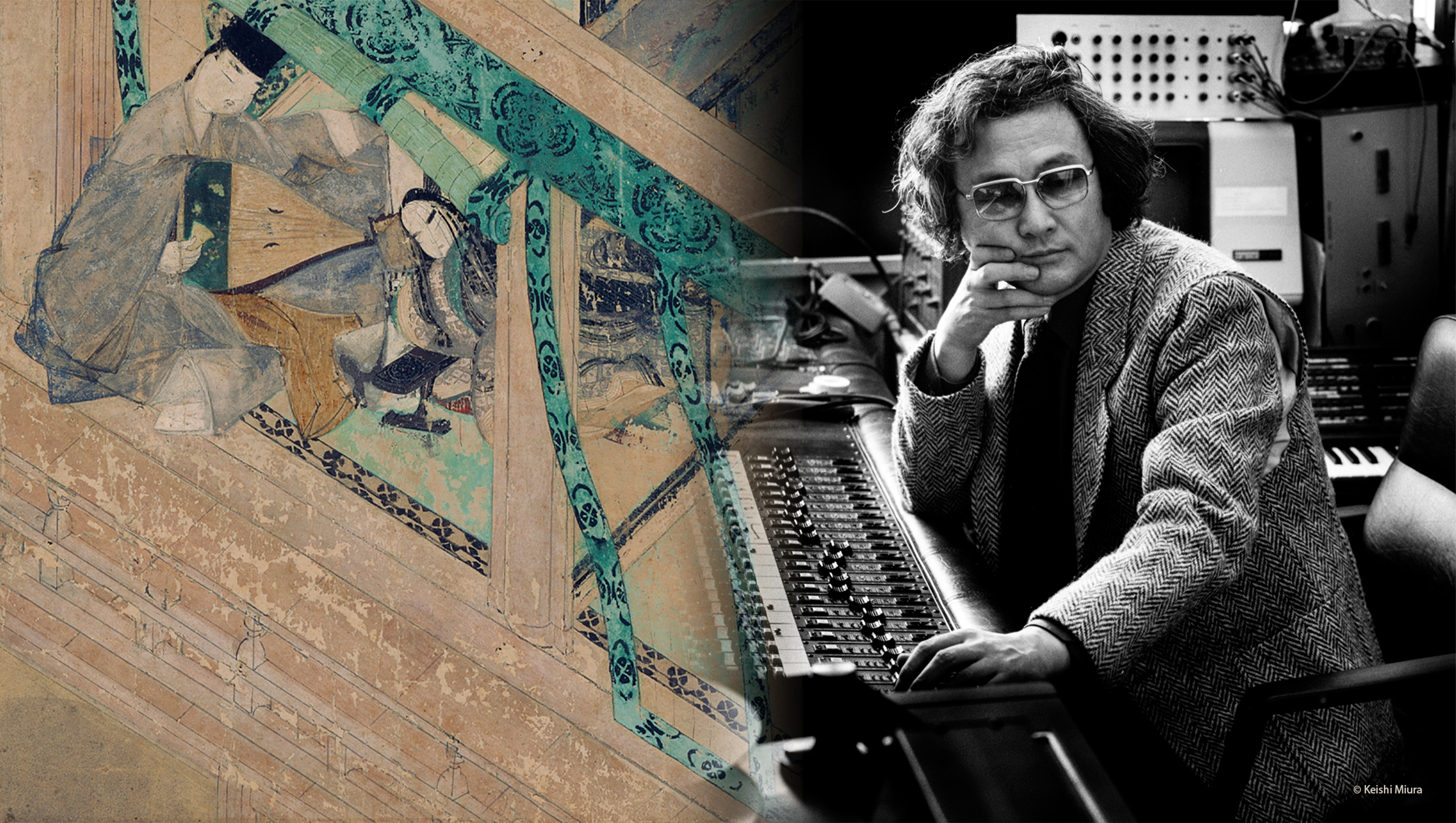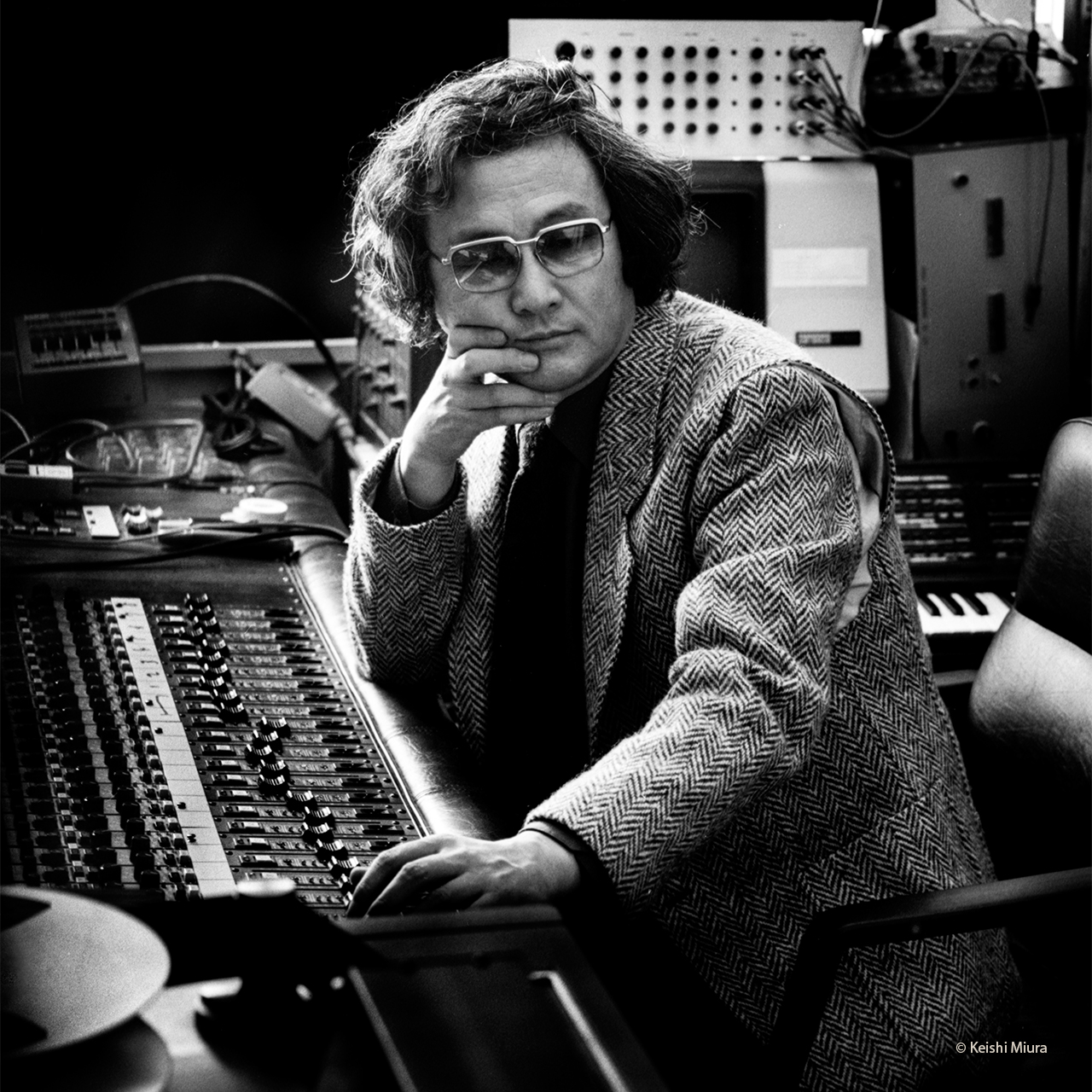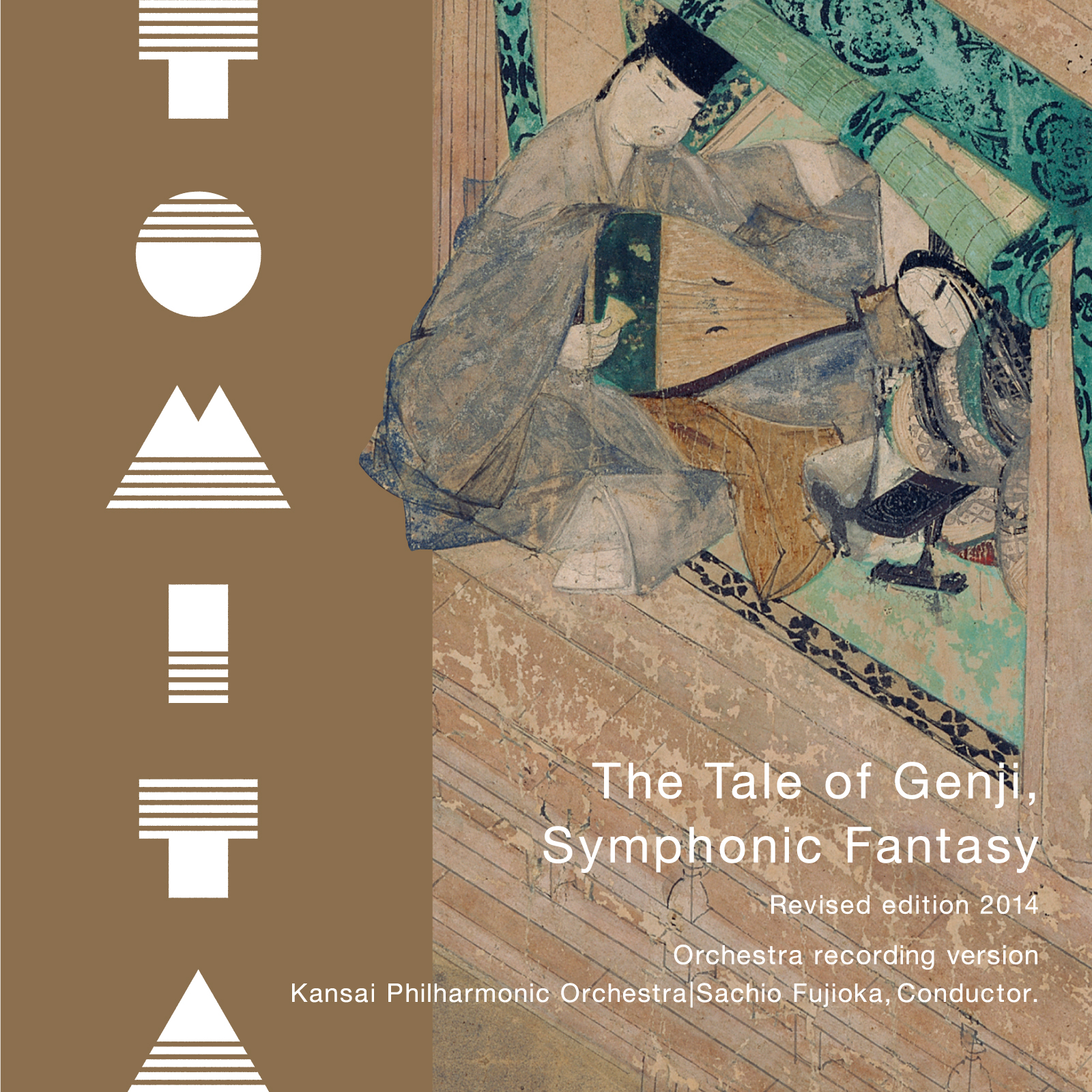“I am very happy to present a new version to the world of The Tale of Genji: Symphonic Fantasy, which my father Isao Tomita so loved. It is of the wonderful concert performance from 2015 by the Kansai Philharmonic Orchestra conducted by Yukio Fujioka.
The latest technology was used for the recording to reproduce the beautiful world of the Heian period that I believe my father would particularly have liked to depict. The sadness of women playing Japanese instruments and metal chopsticks known as Myochin Hibashi in Japanese, along with the voice of Lady Rokujo, mad with jealousy, are dynamically and delicately reproduced in 3D audio, transcending space and time. I am truly grateful to everyone involved.
I hope this symphonic fantasy remains close to the hearts of many people long into the future.

Isao Tomita “The Tale of Genji: Symphonic Fantasy”
The Kansai Philharmonic Orchestra, under the direction of Yukio Fujioka

Isao Tomita “The Tale of Genji: Symphonic Fantasy”
The Kansai Philharmonic Orchestra, under the direction of Yukio Fujioka

Isao Tomita “The Tale of Genji: Symphonic Fantasy”
Orchestra recording version
The Kansai Philharmonic Orchestra, under the direction of Yukio Fujioka

Isao Tomita “The Tale of Genji: Symphonic Fantasy”
The Kansai Philharmonic Orchestra, under the direction of Yukio Fujioka

Isao Tomita “The Tale of Genji: Symphonic Fantasy”
The Kansai Philharmonic Orchestra, under the direction of Yukio Fujioka

Isao Tomita “The Tale of Genji: Symphonic Fantasy”
Orchestra recording version
The Kansai Philharmonic Orchestra, under the direction of Yukio Fujioka

Isao Tomita “The Tale of Genji: Symphonic Fantasy”
The Kansai Philharmonic Orchestra, under the direction of Yukio Fujioka
The Final Evolution of The Tale of Genji: Symphonic Fantasy by the Iconoclastic Composer Isao Tomita
The Tale of Genji: Symphonic Fantasy was released in November 2000 and is said to be the culmination of Tomita’s musical legacy. Even after its release, Tomita continued to refine the work through many more rounds of revision. The legendary live performance of the work on April 3rd, 2015 at Izumi Hall in Osaka with the Kansai Philharmonic Orchestra, under the direction of Yukio Fujioka, was recorded in a high-resolution, 3D format using the cutting-edge technology.
This album represents Japan not only in its combination of orchestral composition and traditional Japanese musical instrumentation, but also as an integration of Tomita’s own musique concrète, resulting in a finished product that emblemizes Japan in the 21st century. Its magnificent spatial presentation is noteworthy in its own right, and the advanced recording and mixing technologies allow the audience to enjoy sound fidelity that is as close as possible to what they would have experienced in the actual concert hall.
Commentary of Isao Tomita and Yukio Fujioka on the Composition on the Day of the Concert
A precious recording not included on the album. (in Japanese)

